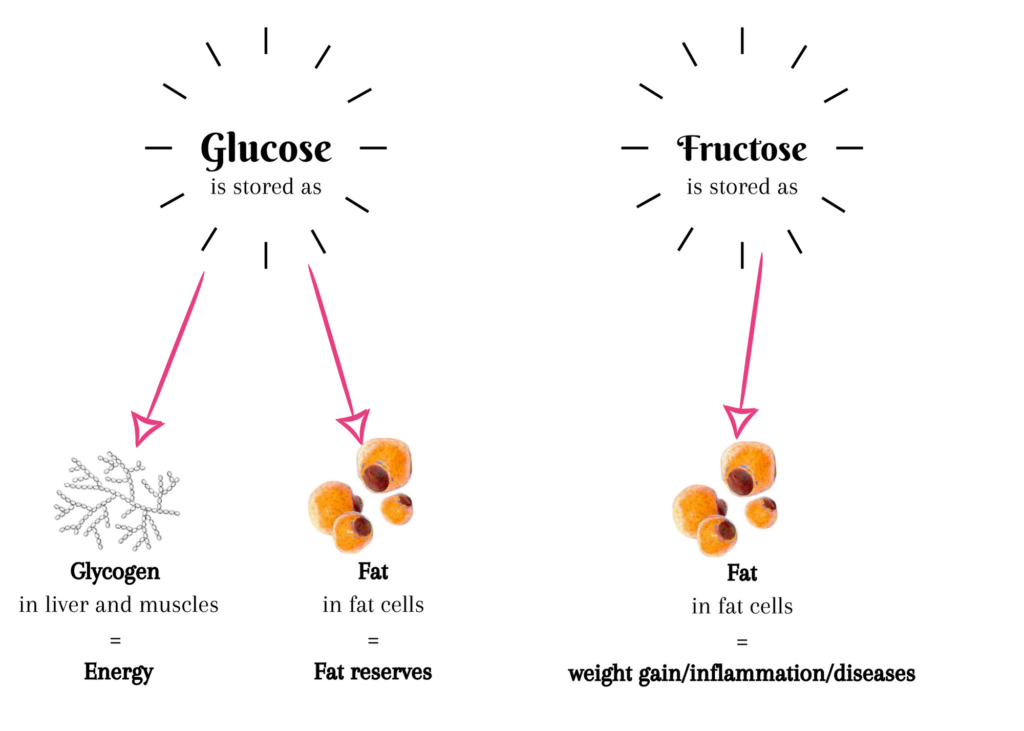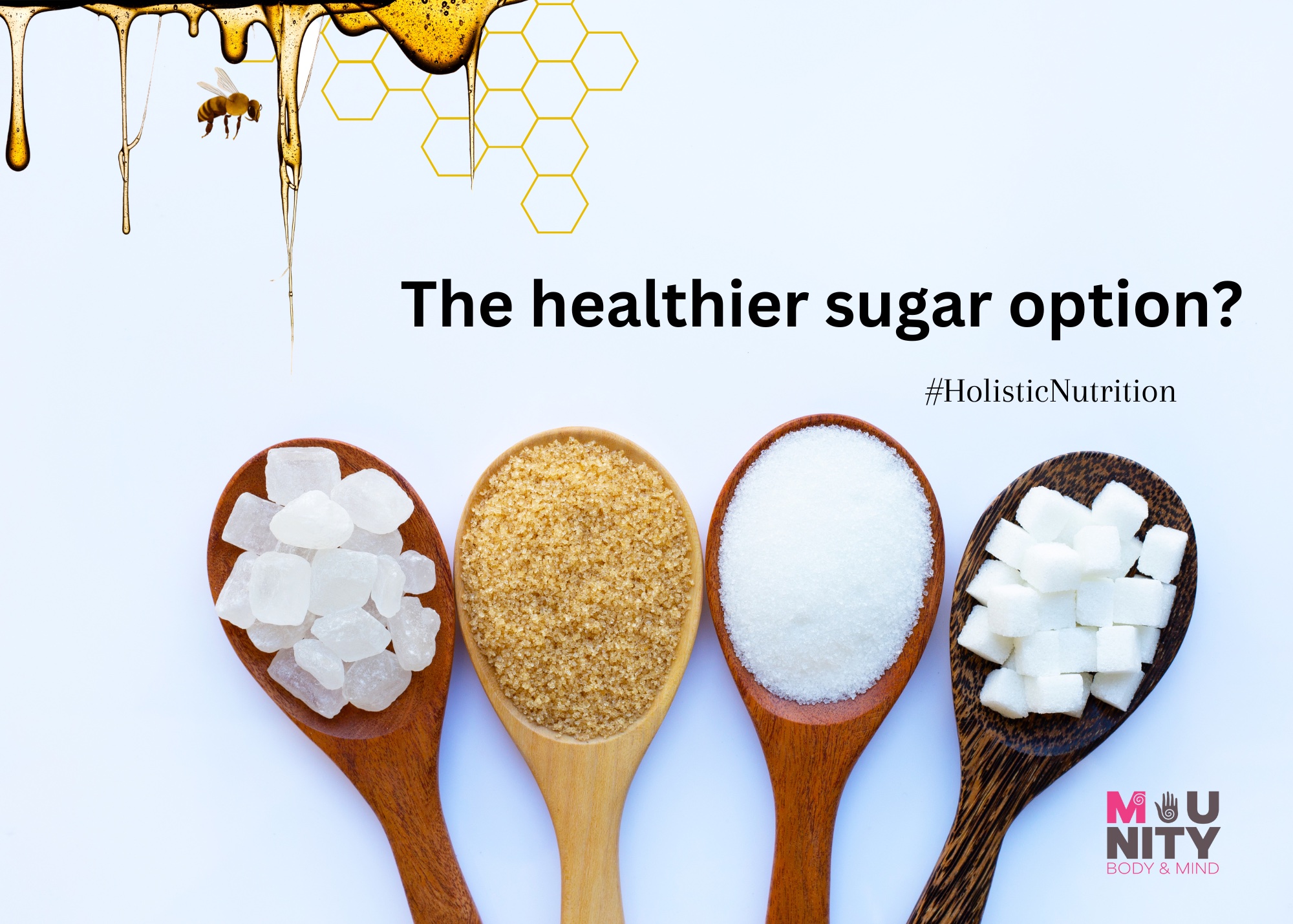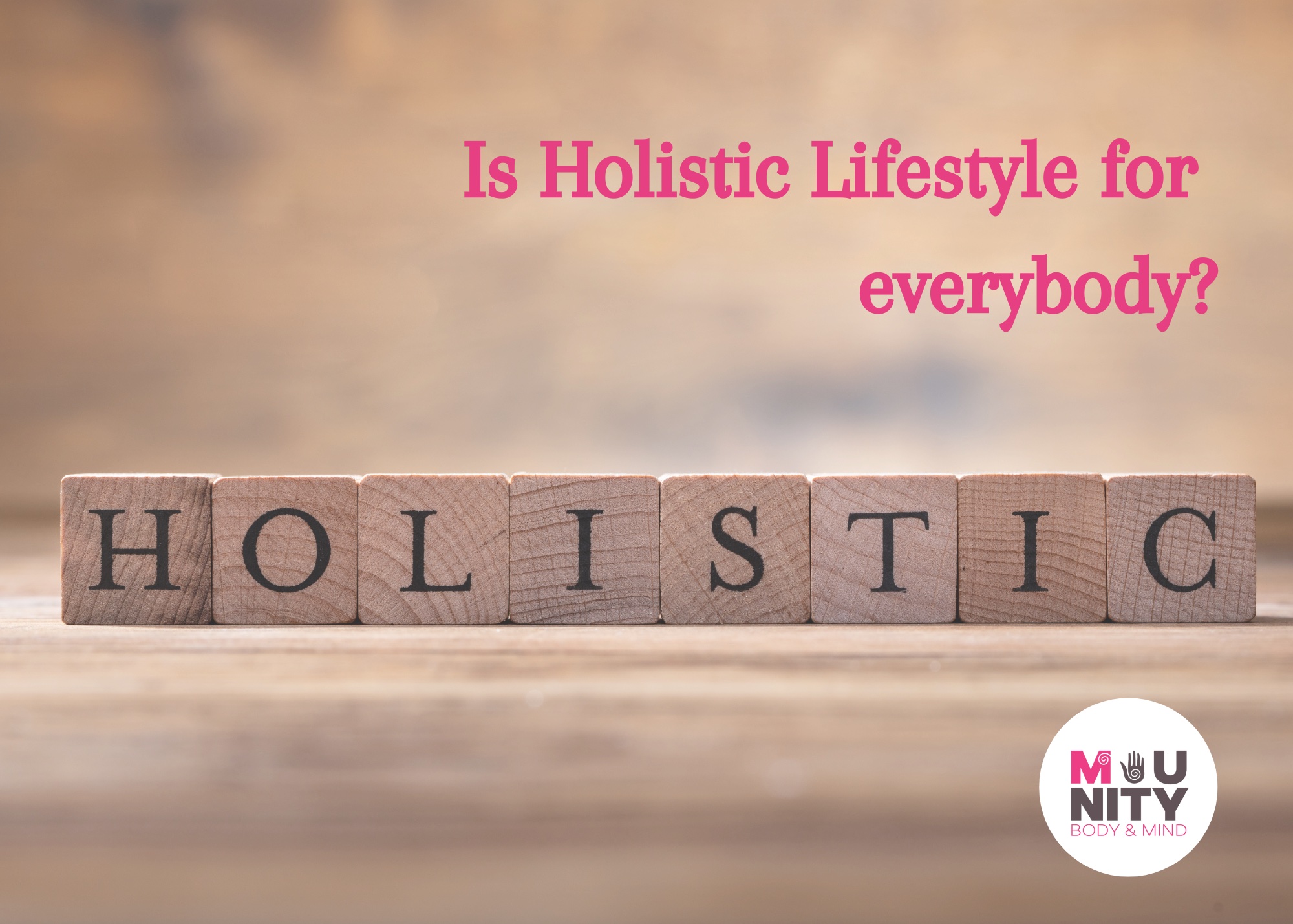The healthier sugar option?
Do you know the quote: “You can’t make everybody happy. You’re not sugar.”
One thing is true – sugar produces the “feel good” neurotransmitters (serotonin and dopamine) in our brain. When we feel good, everything around us is good as well and we feel energized with zest for life. Or at least, the world becomes bearable for a bit.
But, I have a question for all of you health-freaks, calories or weight loss conscious peeps out there – how do you choose which sugar goes into your coffee, smoothie or whatever needs sweetening in your life?
If you are anything like me, you choose the healthier option, right? But is there such an option? Healthier sugar option?
Keep reading and you will find out.
What is sugar?

“I’m giving up sugar for a little bit. I want to lose weight!”
“I only eat foods with ‘natural sugar’ in it, because it is healthy.”
“Dried fruits are an amazing snack for my kids, it gives them energy!”
“I’m on a detox diet, I love my smoothies with agave or honey!”
I’m sure you’ve come across these statements, maybe you were the one saying them to your friends.
They sound logical, right? If we can, we want to choose the healthier option.
To make the right choice for you – about sugar, let’s take a look at what sugar actually is.
Sugars are molecules made of carbon, hydrogen, and oxygen atoms, and all carbohydrates are made of these sugar molecules, from single unit structures to very complicated chains.
Now, sugars called monosaccharides are the most basic of the carbohydrates.
“Monosaccharide” comes from the Greek words for “single” and “sugar”. Yep, for sure I researched it!
There are several types of monosaccharides, but to make it easier for you – the three major simple sugars are:
Fructose—the sugar we get from whole fresh fruit.
Galactose—the sugar found in milk.
Glucose—the sugar our bodies use the most. It’s found in plants and veggies, and also produced when our bodies break down other carbs.
Fun fact— glucose is the only sugar essential for brain cell function.
Now let’s continue with this chemistry lesson.
When two monosaccharide molecules collide, they form a ‘disaccharide’
(from the Greek for “two sugars”). For the purpose of this blog, I’m going to focus on:
Sucrose (glucose + fructose)—produced in plants such as sugar cane and sugar beets.
You’ll find out later why this information was important. Bear with me, it’s worth it.
Glucose and Fructose
Glucose’s primary biological purpose in our bodies is to be turned into energy. Add oxygen that you breathe and bam – it powers up your cells! Fructose makes you fat!

The reason sugar molecules are so important is because of how our bodies use them.
They cause glucose spikes!
Glucose spike
Now it gets interesting! Glucose spikes!
When we eat starch and sugar, by the time these molecules reach your small intestine, they’ve been turned into glucose and fructose. The glucose makes its way through the lining of our gut into the bloodstream using every capillaries we have – to distribute the glucose throughout our bodies. Glucose doesn’t just take a joy ride in our blood. It trickles into every part of our bodies.
When you have your glucose level checked by a doctor, typically they draw blood to assess the glucose concentration. This concentration is usually measured using ‘mmol/L’ (millimoles per litre) or ‘mg/dL’ (milligrams per decilitre). These measurements depict the same thing:
How much glucose is freely roaming in your body!
I’m not going to bore you with baseline levels, or fasting levels of glucose, or optimal levels, or ‘normal’ levels. It’s all about your own baseline levels that glucose spikes can be identified.
However, generally – a glucose spike is an increase in glucose in your body by more than 1.7 mmol/L after eating.
The goal of being and feeling healthy, managing your type 1 diabetes or other diseases and illnesses, losing weight, and stopping bloating – is to avoid huge glucose spikes!
The goal is to flatten your glucose curve by eating the food in the right order and knowing how you can counter the effects of sugar!
Sugar is sugar
With so many ‘healthy’ sugar choices, many of us choose brown sugar over white table sugar. Or maybe you choose a sweetener like Splenda or Stevia over brown sugar. Or is it honey or agave syrup? Fruit juice maybe?
Well, let me tell you a well known secret!
Many of us believe that sugar in a certain form, color or taste is healthier than normal sugar. Well, that is simply not true.
When it comes to understanding what food does to our bodies, it is the molecules that matter, not the calories. And there is also something else that doesn’t matter – the name of the food. In this case sugar.
Whether you are willing to believe it, or find out for yourself – but on a molecular level (meaning after the sugar enters your body) – there is no difference between a table sugar and honey or agave syrup or whatever sugar you use.
You see, every sugar comes from a plant or vegetable and hence is ‘natural‘ by nature.
But even so-called healthy “natural sugars” such as honey, agave, dried fruit and even fresh fruit juice – affect your body the same way!
They all cause glucose and fructose spikes.
That’s why it doesn’t matter how you take your sugar. The molecules are what really matters. Your body doesn’t process sugar differently just because it is called some fancy name, or has different form or color. Only difference is the ratio of glucose and fructose molecules that vary from sugar to sugar.
What bothers me personally, is the misinformation that is being shoved down our throats about “healthy sugar”.
Like brown sugar is healthier than white sugar. I used to fall for this hype as well!
But….. Do you know what brown sugar is?
Brown sugar, even though it sounds pretty healthy – is made of the same thing as white sugar – except that it is tinted with molasses to make it more “wholesome”. It gets a quick make-over to look more healthy and appealing!
And molasses is a by-product of the sugar-making process.
And caster and icing sugar are table sugar that has been grinded into a fine powder.
Don’t even let me start on “healthy” dried fruit!
As soon as a fruit is denatured, processed and its fibre extracted – it becomes sugar like any other sugar.
And because there is no moisture in dried fruit, you will eat many more pieces than you would of whole fresh fruit. So you consume more sugar, more quickly and more often than is healthy for you – resulting in huge big glucose and fructose spikes.
Hence, once again – Any kind of sugar, regardless of its color, taste or plant origin – is still glucose and fructose and it has the same effects on your body on a molecular level. If you want fruit, choose whole fruit.
Another hype that needs to be let go off is the hype about agave syrup and its lower glycaemic index (GI). It is often recommended to people with type 1 diabetes and women with gestational diabetes.

However, science shows that agave syrup has more fructose than table sugar, which means it creates bigger fructose spikes in our bodies.
So agave syrup is worse for your health than table sugar!
You don’t have to believe me, research it for yourself.
Short and long term effects of glucose spikes
We usually won’t hear about the glucose unless we have diabetes or other symptoms.
But glucose spikes actually affect each and everyone of us, every single day.
The short term effects of glucose spikes can cause:
- constant hunger, cravings, fatigue, worse menopause symptoms, migraine, poor sleep, difficulty managing type I diabetes, gestational diabetes, weekend immune system, worsened cognitive function
The long term effects of glucose spikes can cause:
- acne and other skin conditions, aging and arthritis, Alzheimer’s and dementia, higher cancer risk, depressive episodes, gut issues, heart diseases, infertility and PCOS, insulin resistance and type II diabetes, non-alcoholic fatty liver disease, wrinkles and cataracts, depression
Bottom line:
There is much research that confirms all of this. Read it, educate yourself, wear a continuous glucose monitor (ask your nutritionist about this option) and find out for yourself.
But please do not get sucked into “healthy” hypes about sugar.
Sugar doesn’t give you energy, it simply makes your body flush itself with the happy hormones, that’s why you think it gives you energy.
When your body goes through glucose spikes for a prolonged time, the processes that these spikes set into motion are oxidative stress, glycation, inflammation, insulin excess – and these lead to chronic conditions – from type 2 diabetes to PCOs to arthritis and depression.
Have any sugar you want, in moderation of course – it affects your body the same on molecular level!
But there are many hacks you can do to flatten your glucose curve without needing to stop eating the delicious, sweet yummines!
If you want to learn more about sugar and what you can do to fight its effects on your body – go to askmarcela.com and “Let’s talk!” First talk is always for free.
You and your body are special, get to know yourself!
I know YOU CAN! Do you?





